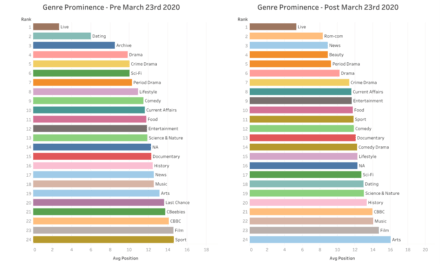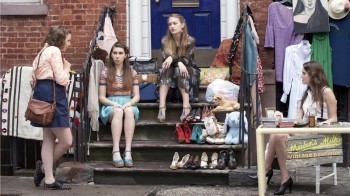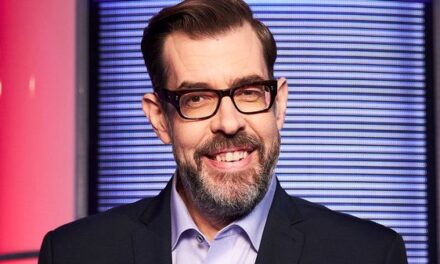
The Royal Television Society Huw Wheldon Memorial Lecture recently broadcast on BBC4 and titled ‘Public Service Broadcasting: A House of Cards?’ reflected on the changing landscape of broadcast television in light of developments in digital and internet technologies of content consumption. Lord Dobbs acknowledged some of the recent and historical failings of public service broadcasting resulting in a somewhat sombre tone, one in which ‘old broadcasting’ appeared to be somehow out of date and in need of dire change. The talk, as I read it on first viewing, implied a gulf between ‘old’ and ‘new’ technologies where ‘old’ broadcasting would suffer ‘casualties’ and struggle with financial pressures. More generally, there was a sense that ‘old broadcasting’ needed to meet the changes delivered by new technologies. Representatives of old and new pointed to ‘changing’ technologies, ‘changing’ viewing habits, ‘changing’ platforms, and ‘changing’ markets. Everything has changed, the narrative went, and broadcasters need to get on board or face redundancy. Central to this claim was the perception that consumers now have a level of control and initiative that results in much more self-determination and selectivity in their viewing. The requirement of ‘old broadcasting,’ therefore, is to answer the call of consumers and to respond to their needs rather than command them. Arts and entertainment institutions were finding novel ways to engage with audiences, so the reflection went. In reference to this Lord Dobbs mentioned that iconic marker of new trends in television, the Netflix remake of his drama series House of Cards. While Lord Dobbs offered an enthusiastic overview of the new players in the television content market, the overall tone was one of threat and anxious anticipation.
Yet, while one could hardly argue that nothing has changed, there is much that remains the same. Not only this, but those icons of change – Netflix, Amazon and the like – seem, in some instances, to be adopting the model of broadcast television, particularly in the case of scheduling. During the same week that the RTS lecture advocated the need for broadcasters to respond to the changing media landscape, it was announced that Netflix would release one of its latest series using the episode per week model characteristic of broadcast television.
According to popular views, the scheduled nature of broadcast television represents an archaic model of content consumption, now past its prime and increasingly limited in its use or value. Choice, as proponents of self-selected television viewing say, marks the fundamental shift from ‘old broadcasting’ to new modes of television consumption. According to this view, broadcaster-determined schedules are at odds with consumer desires and patterns of viewing. And, so significant is the trend in self-selected scheduling that audience measurement agencies such as Nielsen and BARB have not only begun to acknowledge catch-up and post-broadcast audience numbers, but Nielsen recently launched a campaign to urge for the inclusion of more catch-up and online services in audience measurement.

This trend towards non-scheduled viewing could indicate a broader move from push to pull media. In response to this, references to a crisis of broadcasting and schedule periodically emerge in relation to the perceived threat posed by non-broadcast television content providers and on-demand services. Alex Zambelli of The Guardian, for example, warned last year that the television market was increasingly leaning towards on-demand streaming services resulting in a rise of ‘cord-cutters’ who abandon linear television altogether. Zambelli concluded his article with speculation of the near future state of broadcast,
It will possibly take another decade for cord-cutters to become the majority, but rest assured that the moment some Netflix-like service is able to offer us all our favourite TV shows, movies and live sports at any time, at any place, on any device – that is the moment we can begin sounding the death knell for live linear television. To the generation of children being born now, flipping TV channels will one day seem as foreign as rotary phone dialing.
To forestall this death knell, many broadcasters and television providers have moved into the on-demand market in order to capture this migrant audience. On the one hand, this might read as a futile effort to chase the audience, yet perhaps it might also be understood as a re-positioning of traditional broadcast in a new digital landscape. While this shift to on-demand provision might seem a move from linear scheduling to a non-linear, more user-led model, the on-demand provision of these services retains many of the characteristics of ‘old broadcasting’, and recalls scheduled broadcast in many ways. This suggests that, for the moment, at least, a form of scheduling still determines the viewing habits of many, even if content is not consumed ‘live’. And given the continued popularity of on-demand services of broadcasters, it is, rather, the call for broadcasters to ‘get with the programme’ that seems out-dated.
The UK terrestrial channels, for example, each have an on-demand presence and these are often catch-up services with most of the recent releases of content provided shortly after television broadcast. Some broadcasters such as BBC and Channel 4 have dabbled in streamed-only content, but the catch-up services predominantly follow on from the linear broadcast service. As such, a sense of scheduling is still evoked if not directly enacted. For example, most of what appears on the front page of BBC iPlayer refers to contents broadcast as recently as the previous day. A view from the day of publishing 12th March 2015 promotes a range of just aired programmes and a click on the link to the ‘Today’s Most Popular’ again reflects the tendency towards recently broadcast programmes, all of which were aired during the previous week. Scheduled broadcast, in these instances, operates as the template for on-demand services. No surprise, perhaps, since broadcasters have an investment in viewing figures for its recent programmes.


Other broadcasters offer an archive of licensed content on their on-demand services. Both 4oD (Channel 4) and Now TV (from Sky) have full series of classic and popular programmes historically broadcast. In this sense they provide a content model closer to non-broadcast providers such as Netflix, where viewers can navigate through a database of programmes and self-select individual shows or episodes without reference to a schedule. Yet both 4oD and Now TV have expressed an interest in, or already provide, the capacity to stream live programmes. Now TV already offers live television streamed to non-TV set devices bringing one of television’s primary appeals – liveness – to its streaming service. It was recently announced that Channel 4 would do the same with its updated streaming service reportedly called All 4 where viewers will be able to watch Channel 4 broadcasts live streamed. In the contemporary discourses of new media and digital platforms, this would seem a regression to ‘old broadcasting’ models, but the demand for on-demand, it seems, doesn’t necessarily compete or do away with the desire for scheduled programming.
One final example referenced at the start is that of Netflix and Amazon Prime, often considered the primary examples of changing television markets and viewing habits. Much was made of Netflix’s foray into original programming, not least because Netflix was seen to bypass the usual model of broadcast scheduling altogether. The release of House of Cards, Orange is the New Black, Marco Polo and others resembled that of DVD release, where an entire season was made available at once. Indeed Netflix and Amazon Prime continue to issue original series’ in this manner, capitalising on its difference from traditional television broadcast through the promotion of viewer control and choice in their marketing material.

Of note, however, is the creeping return of the episode per week release. Increasingly, Netflix promotes ‘New Episodes’ on its list of ‘Popular on Netflix’ recommendations list. Currently the adoption of this weekly schedule is justified by programmes such as Better Call Saul and Betweenhaving first view airing rights allocated to other broadcasters. Amazon’s weekly scheduled release of Ripper Street occurred for much the same reason with the BBC having first view airing rights. However, the scheduling of programmes seems at odds with how Netflix, in particular, had previously positioned itself in the market. In 2013, Ted Sarandos of Netflix had claimed that,
Our viewing data shows that the majority of streamers would actually prefer to have a whole season of a show available to watch at their own pace… Netflix has pioneered audience choice in programming and has helped free consumers from the limitations of linear television. Our own original series are created for multi-episodic viewing, lining up the content with new norms of viewer control for the first time.
The move to scheduled viewing might stem from distribution rights, but the recent practice of scheduling represents a return to old broadcasting. The television schedule, it seems, still has life in it.
The tendency to posit old and new content models as being in tension with each other is perhaps a perception rather than a practice. If some practices in television seem out-dated, others such as scheduling not only continue in new forms but, as the case of Netflix and Amazon Prime show, are increasingly influencing new content services and technologies. One of the more forward-thinking comments offered in the RTS lecture was from SBTV founder Jamal Edwards. He pointed towards the continued prevalence of television in everyday life and proposed instead that a more symbiotic relationship existed between old and new. For him, “the right synergy between TV and multi-platform is a winner.” While it might seem a simple statement, Edwards represents the market that is most likely, it is assumed, to disinvest from television in its traditional form. That he regards the best television practice as that which bridges both old and new indicates that the polarity between old and new might itself be a redundant view. The references to the end of scheduling are, perhaps, premature if not inaccurate. They collapse a whole range of issues relating to technology, industry and experience into one reductive narrative. The television schedule is not, therefore, a relic of an older broadcast model, but a blueprint for new content providers too.
Sarah Arnold is Senior Lecturer in Film and Television at Falmouth University. She is currently working on the book Television, Technology and Gender: New Platforms and New Audiences for I.B. Tauris. Her previous books include Maternal Horror Film: Melodrama and Motherhood (Palgrave) and the co-authored book The Film Handbook (Routledge). Her research focuses on viewing spaces and environments of, and within, television and film.





